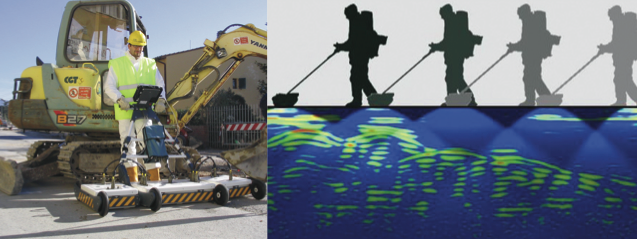 Street works are a familiar problem; there are many pipes and cables buried beneath our streets and maintaining or renewing them causes major traffic congestion. Across Europe, streetworks are one of the major costs for utility, city, or highway authorities. Recognising this, the European Commission is supporting research into how disruption can be reduced, with funding from the Sixth R&D Framework Programme (Global Change and Ecosystems)
Street works are a familiar problem; there are many pipes and cables buried beneath our streets and maintaining or renewing them causes major traffic congestion. Across Europe, streetworks are one of the major costs for utility, city, or highway authorities. Recognising this, the European Commission is supporting research into how disruption can be reduced, with funding from the Sixth R&D Framework Programme (Global Change and Ecosystems)
One of the keys to reducing problems is a more accurate knowledge of the location of buried plant, so that excavation is only undertaken when absolutely necessary.
There are many techniques used to detect buried structures and utilities; of these Ground Probing Radar (GPR) is already widely used because of its ability to locate metallic and non-metallic items, such as plastic pipes, optical fibre cables, cement and brick structures including ducts and old sewers.
The ORFEUS consortium aims to solve the practical shortcomings of present GPR systems, so that the technique will be more
effective in the complex ground conditions and random back-fill and rubble found under our streets. In addition to minimising digging, the technology can assist when HDD is used by directing bore-heads away from vulnerable services. ORFEUS will develop new and better systems and subject them to a pan-European-field trial programme. A wide range of test sites are needed to evaluate the new GPR systems against present day state-of-the-art equipment.
The project team welcomes active external interest in the requirement and evaluation phases of the work through the ORFEUS User Group and, in return, will share its findings as the work progresses. Utilities, highway authorities, city municipalities, mapping agencies, contractors, land surveyors, or civil engineers who manage, regulate, map or carry out street-works throughout Europe are invited to participate.
The project will run until October 2009 and the investment is €5M, 50% of which is contributed by the European Commission and 50% by the nine Consortium members.
